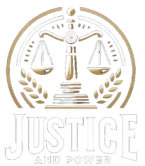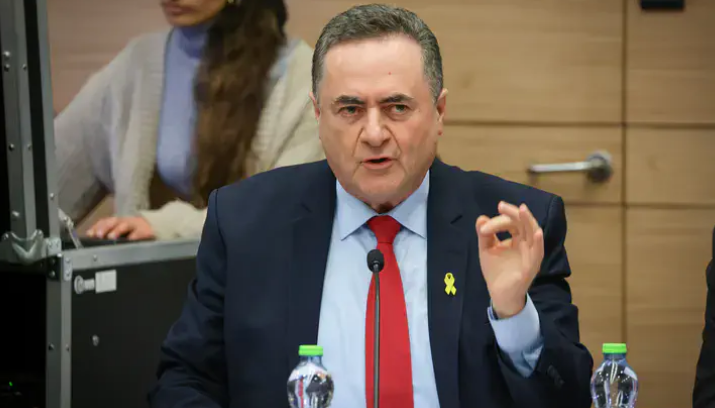Activist says some 30 families living at temporary sites, but 800 have signed up to move to 6 potential settlements in Strip; group holds Passover seder in border area in symbolic call
Reut Ben Kamon was in third grade when her family was uprooted from the Neve Dekalim settlement during the 2005 disengagement from Gaza. The scenes of soldiers clashing with settlers left her traumatized, she said. Yet she waxes nostalgic about life before the evacuation, describing the sand dunes she and her friends would roll down behind her home, the fresh air, the blossoms and the diverse mix of Jews who were her neighbors.
“It was a place where you truly felt the essence of the people of Israel and the land of Israel,” Ben Kamon recalls.
Two decades later, Ben Kamon joined several other families who braved an unseasonal bout of rain to spend the Passover seder in tents near Kibbutz Sa’ad in the Gaza border area, as a symbolic act calling for the Jewish return to Gaza. JTA)
JTA — Reut Ben Kamon was in third grade when her family was uprooted from the Neve Dekalim settlement during the 2005 disengagement from Gaza. The scenes of soldiers clashing with settlers left her traumatized, she said. Yet she waxes nostalgic about life before the evacuation, describing the sand dunes she and her friends would roll down behind her home, the fresh air, the blossoms and the diverse mix of Jews who were her neighbors.
“It was a place where you truly felt the essence of the people of Israel and the land of Israel,” Ben Kamon recalls.
Two decades later, Ben Kamon joined several other families who braved an unseasonal bout of rain to spend the Passover seder in tents near Kibbutz Sa’ad in the Gaza border area, as a symbolic act calling for the Jewish return to Gaza.
Organized by the Nachala Israel Movement – a settler group promoting new Jewish outposts in the West Bank and the resettlement of Gaza – the encampment featured repurposed sukkahs, bouncy castles and a full lineup of speakers, children’s activities and tours. Thousands of Israelis visited over the intermediate days of the holiday.
The settler movement has long viewed the seder as a symbolic act of redemption and a catalyst for establishing new settlements. In 1968, activists posing as Swiss tourists used the seder as a pretense for re-establishing a permanent Jewish presence in the Palestinian West Bank city of Hebron, three decades after the last of the city’s Jews fled following massacres. Today, Hebron is an epicenter of settler activity, with thousands of Jews living in and near the city.
And in 1975, activists from the Gush Emunim settlement movement held a seder in the northern West Bank at a site that would later become Kedumim, where Nachala’s founder, Daniella Weiss, served as mayor for more than a decade. Now, Kedumim has close to 5,000 residents.
Three years ago, Nachala hosted a seder near the Tapuach Junction, a move that preceded the establishment of the controversial Evyatar outpost – the term used for wildcat settlements that do not have permission from the Israeli government. In June, Evyatar was legalized by Israel’s cabinet along with four other outposts.
According to Arbel Zak, a senior Nachala leader responsible for mobilizing families to relocate to new settlements, some 80 outposts in the West Bank have been formed since the outbreak of the war. For her and others in the movement, Gaza is the next frontier.
“People say it’s not logical, or that it won’t happen. But Evyatar, and Gush Emunim itself, proved that it is possible and it is logical,” Zak said.
Ben Kamon was one of those who never seriously considered the idea of returning to Gaza – until October 7 happened.
“I never imagined for a second that moving back would ever be a possibility. But the second the war started, we knew it was a real option,” Ben Kamon said. Last summer, Ben Kamon, her husband, and their four young children moved from the West Bank settlement of Eli to the southern community of Zimrat, to be closer to Gaza and to her dream. They now live in a temporary site meant for “pioneers,” she said – people ready to drop everything and settle a new place, sometimes with just a few hours’ notice.
According to Nachala activist Batel Moshe, who signed up to move to Gaza weeks after October 7, around 30 such families live in temporary sites, but a further 800 have signed up to move to six would-be Gaza settlements down the road. The settlement plans, which would see some embedded deep within dense urban areas like Khan Younis, were first unveiled at a January 2024 conference in Jerusalem organized by Nachala and attended by far-right ministers, including from Prime Minister Benjamin Netanyahu’s Likud Party. The prime minister has publicly rejected the idea of reestablishing settlements in Gaza.
“People call asking if they can invest in [Gaza] apartments for their children,” Moshe said.
Weiss pointed to a surge in participation in the group’s activities since the war – including tens of thousands at a recent rally – as evidence of strong public support for its goals.
“Most Israelis are in favor of resettling Gaza, if not immediately, then after an Israeli victory against Hamas,” Weiss said. “This is the real path of Zionism.” Polling does not support Weiss’s claims, however. While early post-October 7 polls showed support for resettling Gaza as high as 44%, more recent data, including a February survey from Israel’s Institute for National Security Studies, indicate a decline to 23%.
Although Weiss and her movement have called for the expulsion – voluntary or otherwise – of Gazan Palestinians, not everyone who has signed up to relocate to the coastal enclave shares that view.
“Whether there will be three Arabs living there or 3 million, it doesn’t matter to me, I don’t care. The point is that Jews need to be there,” said Aharon Amos Ben Naeh, a Jerusalem resident who previously lived in the Old City’s Muslim Quarter.
He said IDF officers had visited the encampment and urged them to stick to their mission. “They came to our seder on the way out [from Gaza] and told us we need to move back there,” Ben Naeh said, in a recollection that another person who was present corroborated.





